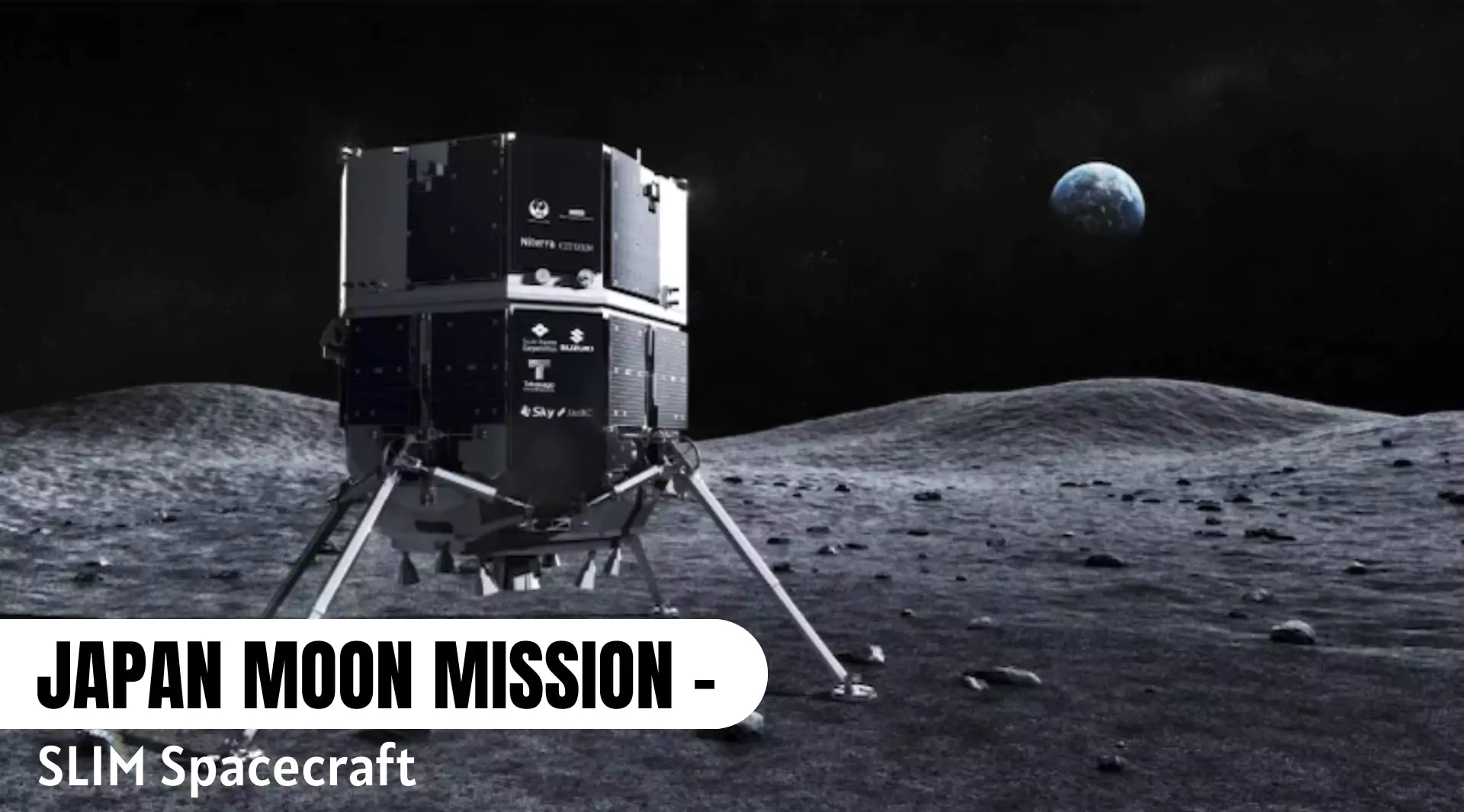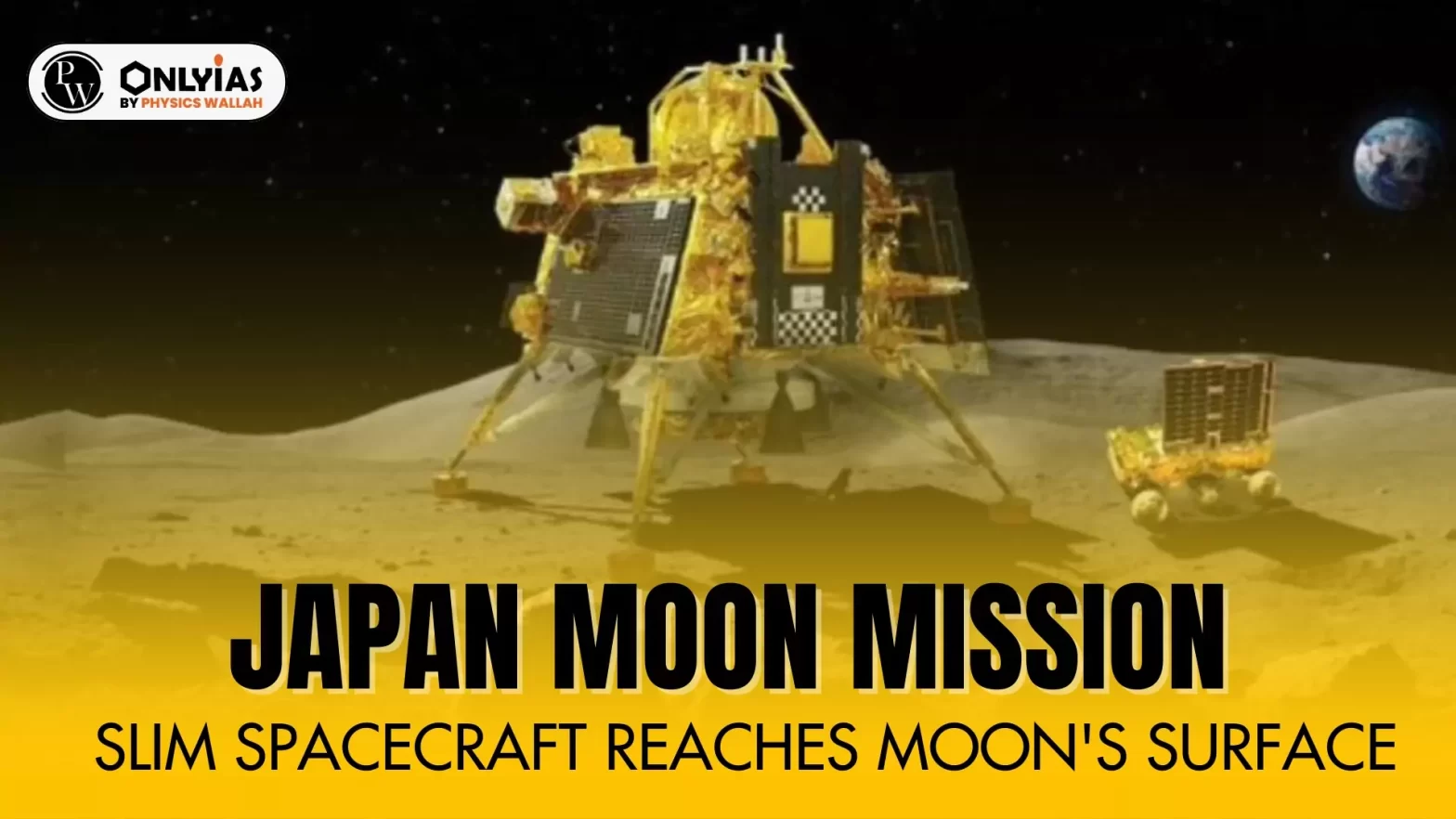Context:
This editorial is based on the news “Asia ascendant: On the new Space Race” which was published in The Hindu. Recently, Japan became the fifth country to soft-land a robotic spacecraft on the moon. As such, the new Space Race is currently being led by Asian countries.
| Relevancy for Prelims: Japan Moon Mission: SLIM Spacecraft, Japan Aerospace Exploration Agency (JAXA), and India’s Moon Mission.
Relevancy for Mains: Countries that performed soft-landing on the Moon. |
Japan Moon Mission: About SLIM Spacecraft
- A Moon Snipper: SLIM spacecraft was designed to land within a 100 sq. m area, and thus its nickname is “moon sniper”.

Japan Moon Mission: SLIM Spacecraft
- Launching of the Japan Moon Mission: On January 19, the SLIM spacecraft of the Japan Aerospace Exploration Agency (JAXA), launched in September, was expected to soft-land on the moon.
- Precision Landing: It is valuable because it allows lunar missions to begin closer to a place of interest, where there may be a smaller patch suitable for landing.
- Achievement of the Objective: Reports from JAXA indicated that the lander had touched down but its solar panels were not producing power, forcing the craft to bank on its batteries.
- Hence, due to the help of batteries, SLIM appeared to be transmitting data, and also its other components did not indicate any damage.
- Tasks Assigned: SLIM, like Chandrayaan-3, was tasked with a lunar soft-landing and deploying a rover mission (with two small rovers) but its primary mission was pioneering.
- The interplanetary spacecraft to the moon and Mars have been assigned suitable landing areas several hundred metres wide.
- Importance for India: JAXA’s lessons from SLIM are expected to inform the planned Lunar Polar Exploration Mission, an India-Japan collaboration with India expected to provide the lander.
- Moon Achiever: Moon’s surface around its south pole is mostly rough terrain. There are now five countries (United States, the Soviet Union, China, India and Japan) with the demonstrated ability to land robotic spacecraft on the moon.
- These plus the European Space Agency are the world’s major spacefaring entities.
Conclusion
Such innovative approaches to lunar landings and their updated precision-orientation is a significant step in the direction of space exploration, in which Asia is showing its power to the World.
![]() 22 Jan 2024
22 Jan 2024


